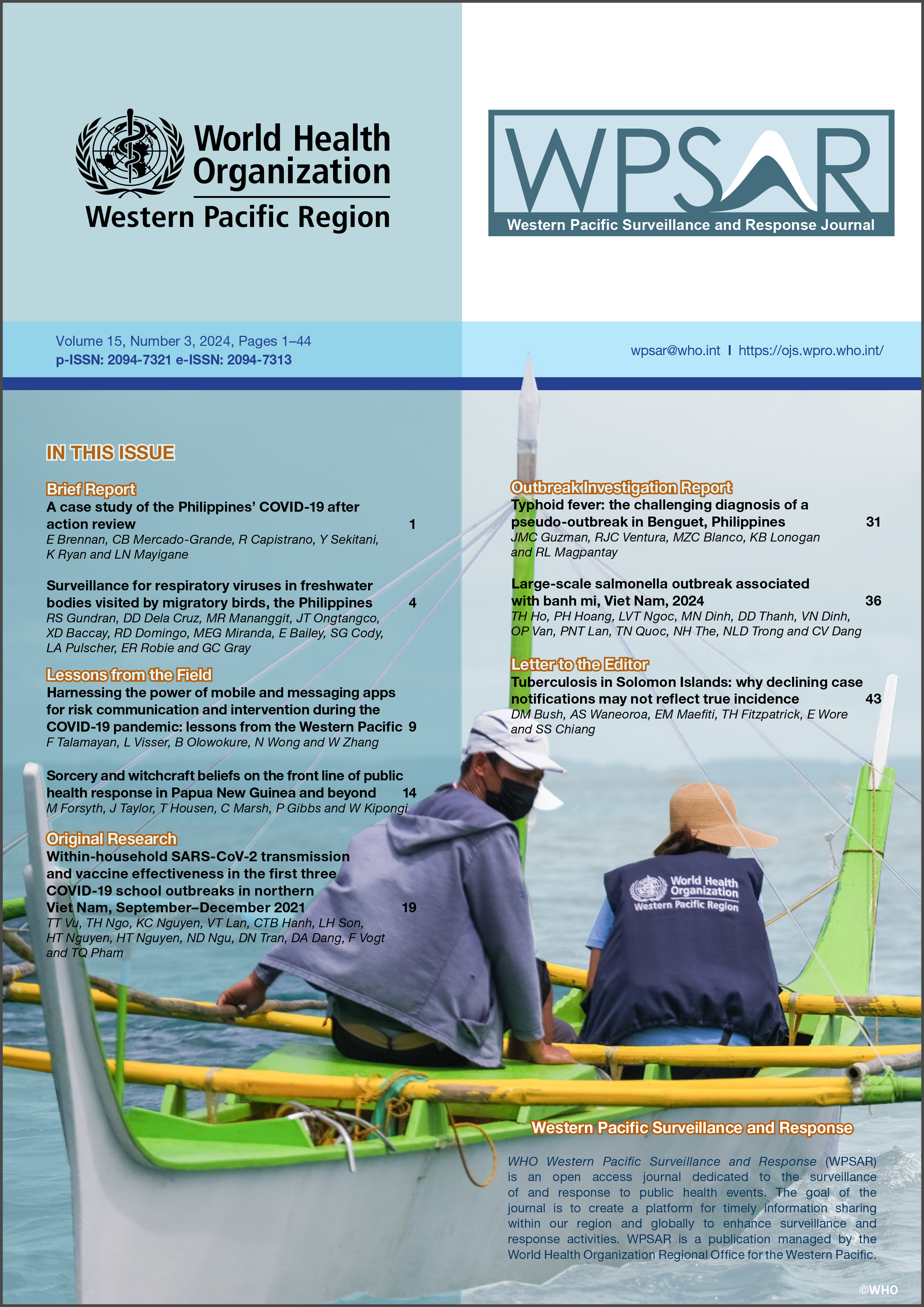Tuberculosis in Solomon Islands: why declining case notifications may not reflect true incidence
DOI:
https://doi.org/10.5365/wpsar.2024.15.3.1174Keywords:
tuberculosis, Melanesia, contact tracing, communicable diseaseAbstract
Interpretation of tuberculosis (TB) surveillance data in Solomon Islands between 2016 and 2022 should be informed by local conditions, including pandemic disruptions in contact tracing. The TB surveillance data recently reported by Yanagawa et al. has features indicative of underdiagnosis. We thus advise caution in the interpretation of this data.Downloads
Published
17-09-2024
How to Cite
1.
Bush DM, Siuna Waneoroa A, Meone Maefiti E, Fitzpatrick TH, Wore E, Chiang SS. Tuberculosis in Solomon Islands: why declining case notifications may not reflect true incidence. Western Pac Surveill Response J [Internet]. 2024 Sep. 17 [cited 2025 Nov. 24];15(3). Available from: https://ojs.wpro.who.int/ojs/index.php/wpsar/article/view/1174
Issue
Section
Letter to the Editor

